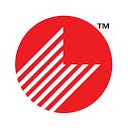Platforms are the future. You could argue — and you won’t be wrong — that technology platforms have been around for decades. At the most fundamental level, an operating system is a platform; Software as a Service (SaaS) can be thought of as a platform; Content Management Systems (CMS) are platforms to create, store, manage, mix, publish and audit content in various formats; analytical platforms ingest, process, analyze, visualize and distribute data; we have security platforms, mobile platforms, gaming platforms…the list can be long. So, why are platforms, suddenly, the future? And what type of platforms are the future? To begin with, cloud has changed and enhanced the meaning and function of a platform. Today’s modern platforms are a collection of integrated applications, technology stacks, and the surrounding ecosystem of connected services, models, tools, and processes that can be brought together based on business needs. But modern platforms are characterized by their ability to scale — not just by 2X or 3X, but to planet-scale. This is why they are the future.
As an organization, we have been in the managed services business (infrastructure, applications, cloud, networks, datacenters, security, and end user experience) for over three decades. People have always been at the heart of the tools and processes we use to deliver the services. The actual work has always been executed by humans.
To help the workforce improve its efficiency, our industry has focused on industrializing the operations by creating libraries of processes that are repeatable and fungible across customers. Over the last decade, Robotic Process Automation (RPA) has been used to assist the workforce to improve its efficiency. The improvement has, however, been incremental. Automation has facilitated engineers, who were (as an example) managing 300 devices, to manage 500 devices. Now contrast this with organizations such as LinkedIn or Facebook/ Meta, who operate on a planet-scale: Their engineers manage anything between 5,000 and 250,000 devices. Platform thinking enables them to achieve these staggering numbers.
We cannot use the normal definition of “platform” here. These platforms don’t just automate repetitive tasks for humans — they are built by rethinking the complete operations so everything across the value chain is automated. All the work is executed by code. Humans support the automation. It is a different ball game.
If you did not notice, we moved from automation supporting humans in the last decade to humans supporting automation in the future. This model allows us to deploy hyper-automation to achieve exponential efficiency and scale. Let’s call this the ‘Platform First’ approach, where applications, tools, and processes are stitched together to deliver additional services. They also enable scale at a fraction of the current price.
The platforms we are betting on have an additional dimension that makes them extremely powerful. They set up environments that businesses can use and, in addition, bring together providers and customers into a single space to create disproportionate value. This takes away the linear models of the past where increasing revenue was possible only by adding more people in operational roles.
The new platforms are remarkable because they cater to the end-users by simplifying their business processes (such as procurement, order to invoice, leave approvals), thus improving enterprise productivity. The platforms deliver what matters to the customer. And not just the enterprise IT function.
A simple shift in perspective allows us to see why this is a dramatically different way for technology companies to operate: In the old model a technology company delivered to 200 people in the IT function; now it delivers to 20,000 or 200,000 across an enterprise.
The secret to success for platform providers lies in the network effect. As an example, when a new customer is added to the platform to the existing customers, it benefits the existing customers. This is because costs can be spread more thinly. Everyone benefits from the extra data the new customer generates — the aggregated data allows the platform provider to determine with greater accuracy the features and services that need to be enhanced or added. It is exactly how a social network gains its muscle — the number of users reaches a tipping point beyond which every new user adds exponential value to the network.
